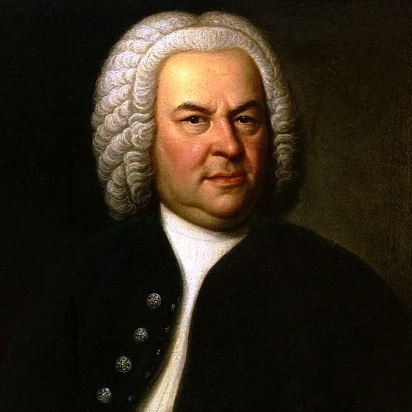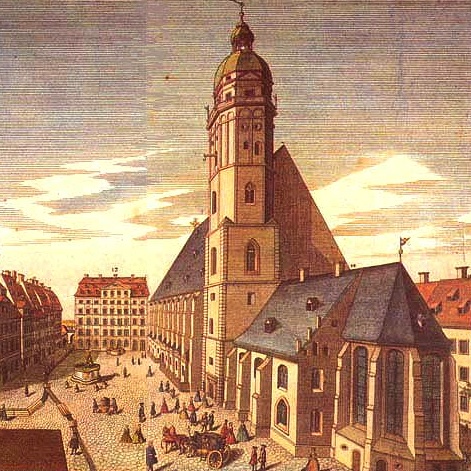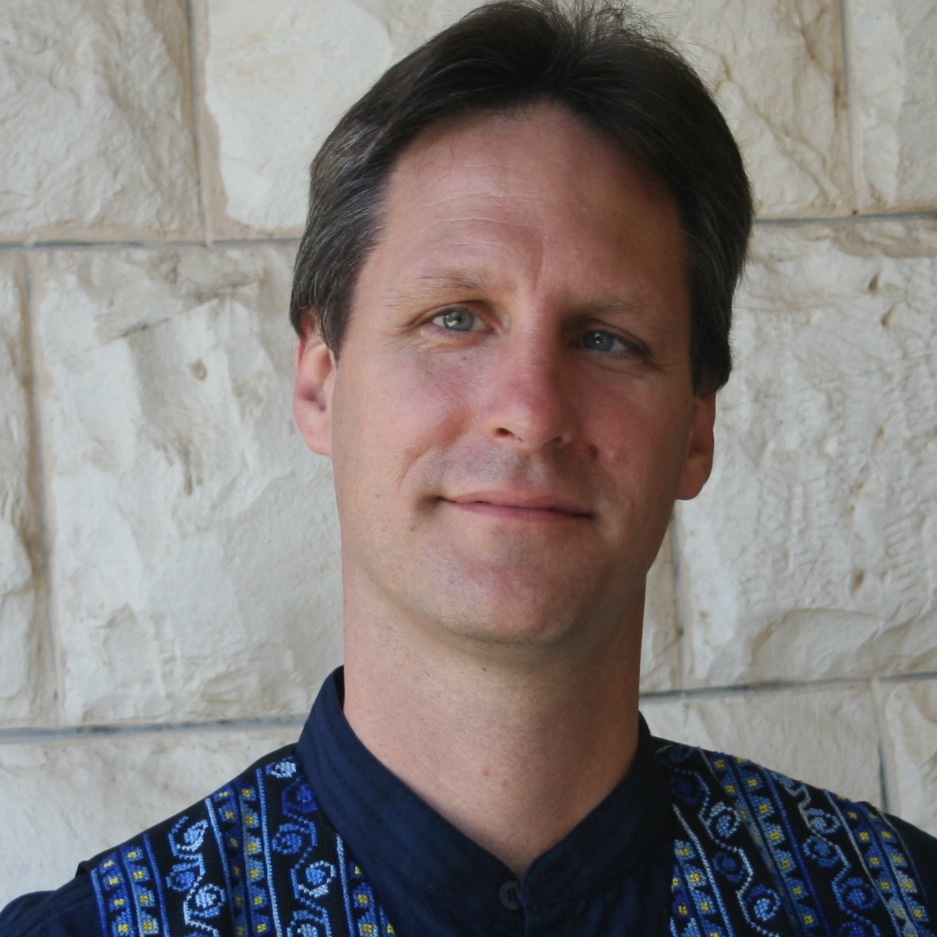by Patricia Jennerjohn
Artistic Director Paul Flight and the California Bach Society present “Singet dem Herrn: Bach motets and chorales” on April 22–24 in San Francisco, Palo Alto, and Berkeley. This stunning all-Bach program includes the virtuosic double-choir motets Singet dem Herrn and Der Geist hilft, the sublime Jesu meine Freude, plus less familiar, but surprisingly elaborate chorales. The works display Bach’s genius and deep faith, with glorious rhythms, extraordinary expression, and joy.
ABOUT THE CHORALES
 Bach worked all of his life on various settings of chorales for organ and for four voices. Many of his chorale settings are found as integral parts of his cantatas (such as Allein Gott in der Höh sei Ehr), and he also composed them as independent stand-alone settings, perhaps for special occasions or for periods of the church year when more complex music such as cantatas was forbidden. Bach also set many chorales into elaborate and intricate compositions for the organ, and in fact one could argue that his organ settings strongly influenced the composition of the chorales meant for vocal performance. The chorales on today’s program characteristically feature the hymn tune in the soprano line, with the lower three lines providing impulse and harmonic interest.
Bach worked all of his life on various settings of chorales for organ and for four voices. Many of his chorale settings are found as integral parts of his cantatas (such as Allein Gott in der Höh sei Ehr), and he also composed them as independent stand-alone settings, perhaps for special occasions or for periods of the church year when more complex music such as cantatas was forbidden. Bach also set many chorales into elaborate and intricate compositions for the organ, and in fact one could argue that his organ settings strongly influenced the composition of the chorales meant for vocal performance. The chorales on today’s program characteristically feature the hymn tune in the soprano line, with the lower three lines providing impulse and harmonic interest.
The melody of Allein Gott in der Höh sei Ehr, BWV 104, (Alone to God on high be honor) is based in part on the Gregorian chant “Gloria in excelsis” from Latin late medieval liturgy and on a “Sanctus in festis duplicibus” of the Graduale Romanum. It was Nikolaus Decius who set this melody with probably a slightly different text in 1522. Decius is considered to be the author and composer of the oldest Lutheran chorales. (Luther wrote his first chorale a year later.) Decius’s melodies are based on those used in the Latin Mass, but he reshaped them to reflect the style of the folksongs of his time. This chorale was designed to replace the “Gloria” of the Roman Mass and was to be sung by the congregation.
The version presented in this concert is a chorale setting from one of Bach’s cantatas (the last movement of Cantata 104, Du Hirte Israel), but the text is the original first verse of the hymn tune. The style is harmonically straightforward and cheerful, as befits the text, with the lower parts providing motion and rhythmic interest.
The hymn Kyrie, Gott Vater in Ewigkeit, BWV 371, (Lord, God the eternal Father) expands the traditional Kyrie eleison/Christe eleison/Kyrie eleison, by interpolating text in German between the three sections, which praise God the Father, Jesus Christ, and the Holy Spirit in turn. This is one of two chorales presented today that are written in a church mode (here, Phrygian), enlivened by a rhythmically vigorous and harmonically inventive underlay.
O Mensch, bewein dein Sünde groß, BWV 402, (O mankind, bewail your great sin) is a Lutheran Passion hymn with a text written by Sebald Heyden in 1530. The author reflects on the Passion, based on the Four Evangelists, in twenty-three stanzas. The first and last stanzas have appeared in eleven hymnals. Catherine Winkworth translated the title as “O man, thy grievous sin bemoan.” The hymn has been used in Passion music and is well known in Bach’s setting as the chorale fantasia that closes Part I of his St. Matthew Passion.
Below the chorale tune, the lower three voices move with a restless rhythm and create tension by many suspensions, which convey a sense of quiet anguish.
Wir glauben all an einen Gott, BWV 437, (We all believe in one God) is another Lutheran hymn. It was written by Martin Luther and published in Wittenberg in 1524 in the first German hymnal. It is the second “modal” chorale (this time, in Dorian mode), and the drive and harmonic invention of Bach’s setting are exceptionally bold.
ABOUT THE MOTETS
 There are six authenticated Bach motets (BWV 225–230). BWV 228 appears to have been written at Weimar and the other five for St Thomas’s Church, Leipzig, between 1723 and 1727. A seventh has recently been subjected to some scholarly doubt as to its authorship. These motets were composed for specific occasions and are not part of Bach’s output for the regular church year. The exact dates and occasions for these motets are not always clear (with the exception of Jesu, meine Freude), but we do know that they were composed mainly for funerals and memorial services. These motets look back to the religious music of masters of the stile antico, such Palestrina and Caldara, and at the same time, are forward-looking, incorporating and distilling modern Baroque musical forms.
There are six authenticated Bach motets (BWV 225–230). BWV 228 appears to have been written at Weimar and the other five for St Thomas’s Church, Leipzig, between 1723 and 1727. A seventh has recently been subjected to some scholarly doubt as to its authorship. These motets were composed for specific occasions and are not part of Bach’s output for the regular church year. The exact dates and occasions for these motets are not always clear (with the exception of Jesu, meine Freude), but we do know that they were composed mainly for funerals and memorial services. These motets look back to the religious music of masters of the stile antico, such Palestrina and Caldara, and at the same time, are forward-looking, incorporating and distilling modern Baroque musical forms.
Singet dem Herrn ein neues Lied, BWV 225, (Sing unto the Lord a new song) probably dates from early in 1727 and takes its texts from Psalm 149, verses 1–3, and Psalm 150, verses 2 and 6. Its first movement is on a very grand scale with innumerable repetitions of the word “Singet!” (Sing!) from one choir, which the other choir follows and embellishes in close order. Bach’s idea here was to create the effect of shouts of joy echoing and re-echoing without end. This is followed by an antiphonal section of call and response between the choirs; then the movement’s central fugue begins. This fugue starts with the Choir 1 sopranos and descends the scale to the basses (SATB); then the Choir 2 basses join with the Choir I basses, and the fugue works its way back up the scale, gathering up the Choir I singers as it does so. This is followed by a further sequence which features decorative melismas on the word “Reihen” (dance).
The second movement’s relative simplicity contrasts with the intricate counterpoint which preceded it. There’s an almost child-like quality to the beautiful harmonization of verse 3 of the chorale “Nun lob, mein Seel, den Herren,” each phrase of which Bach intersperses between contrasting texts sung by Choir I.
The two-part final movement starts with the choir vigorously declaiming the first line, “Lobet den Herrn” (Praise the Lord). It’s purely antiphonal and far less complex than the first movement and concludes with a very well-known and challenging fugue on the last two lines of the text, in which the choirs combine. The long melismas seem to playfully challenge the singers; the text for this fugue translates as “Let every thing that hath breath, praise the Lord. Hallelujah.”
Der Geist hilft unser Schwachheit auf, BWV 226, (The Spirit gives aid to our weakness) is the only motet where the autograph score survives. Bach himself noted on its title “Motet for two choirs for the funeral for the blessed Rector, Professor Ernesti, by J. S. Bach.” Ernesti was professor of poetry at Leipzig University and director of the Thomasschule. As well as being one of Bach’s funeral motets, the work can be classified as part of another series, being one of twelve surviving pieces written for Leipzig University.
The text is taken from the Epistle to the Romans (Romans 8:26-28) and Martin Luther’s third stanza to the hymn “Komm, Heiliger Geist, Herre Gott” (1524). Ernesti himself had chosen the text for the funeral sermon.
The motet is structured in three movements and scored for two four-part choirs. They sing together in movements two and three. The orchestral parts are extant, indicating that Choir I was doubled by strings and Choir II by reeds. For the basso continuo, separate violone and organ parts are provided.
Bach composed the text according to its meaning, not as music for mourning. The opening contrasts the two choirs in imitation. In lively 3/8 time, the word “Geist” (spirit) is illustrated by a melismatic figure. The following idea, “Sondern der Geist selbst vertritt uns” (But the Spirit itself intercedes for us), is given as a fugue, first with independent entrances of all eight parts, but concentrated to four parts in the end, “mit unaussprechlichem Seufzen” (with unutterable sighs). The sighs are audible in the broken melodic lines of all voices. The thought “Der aber die Herzen forschet” (He, however, who examines hearts) appears as a double fugue in four parts in stile antico. Here the word “Heiligen” (saints) is illustrated in extended melismatic writing. The closing chorale is in a very traditional setting.
 The chorale melody on which Jesu, meine Freude, BWV 227, (Jesus, my joy) is based was by Johann Crüger (1653), and it first appeared in his Praxis pietatis melica. The German text is by Johann Franck, and dates from c. 1650. The words of movements 2, 4, 6, 8, and 10 are based on the Epistle to the Romans 8:1–2, 9–11. The scriptures here speak of Jesus Christ freeing man from sin and death. The chorale text is from the believer’s point of view and praises the gifts of Jesus Christ as well as longing for his comforting spirit. Writers have described the chorale and Biblical text as abounding in stark contrasts between images of heaven and hell, often within a single section. Bach’s vivid setting of the words heightens these dramatic contrasts, resulting in a motet with an uncommonly wide dramatic range.
The chorale melody on which Jesu, meine Freude, BWV 227, (Jesus, my joy) is based was by Johann Crüger (1653), and it first appeared in his Praxis pietatis melica. The German text is by Johann Franck, and dates from c. 1650. The words of movements 2, 4, 6, 8, and 10 are based on the Epistle to the Romans 8:1–2, 9–11. The scriptures here speak of Jesus Christ freeing man from sin and death. The chorale text is from the believer’s point of view and praises the gifts of Jesus Christ as well as longing for his comforting spirit. Writers have described the chorale and Biblical text as abounding in stark contrasts between images of heaven and hell, often within a single section. Bach’s vivid setting of the words heightens these dramatic contrasts, resulting in a motet with an uncommonly wide dramatic range.
This motet was written in 1723, Bach’s first year in Leipzig, for the funeral the wife of the postmaster. It is the only motet for which we have a definite date of composition and purpose. It is the longest and most musically complex of Bach’s six “official” motets.
Analysis reveals an arch-like structure, creating a balanced musical symmetry around the central double fugue. The work begins and ends with an identical setting of the first and seventh verse of the chorale. An “inner layer” (just after the opening chorale and just before the ending chorale) consists of identical musical settings of two different scripture texts. The central fugue is bookended on either side with a set consisting of a chorale, a trio, and an aria.
SFEMS members receive a $5 discount on the advance purchase price when using promotion code “SFEMS” until 5 pm on Thursday, April 21. Order by phone at 650-485-1097 or online at www.calbach.org/tickets.pl.
Performances are 8:00 pm, Friday, April 22, at St. Mark’s Lutheran Church in San Francisco; 8:00 pm, Saturday, April 23, at All Saints’ Episcopal Church in Palo Alto; and at 4:00 pm, Sunday, April 24, at St. Mark’s Episcopal Church in Berkeley. General tickets are $28 in advance, or $33 at the door; senior tickets are $20 in advance or $24 at the door. Students and patrons under 30 always pay $10.












